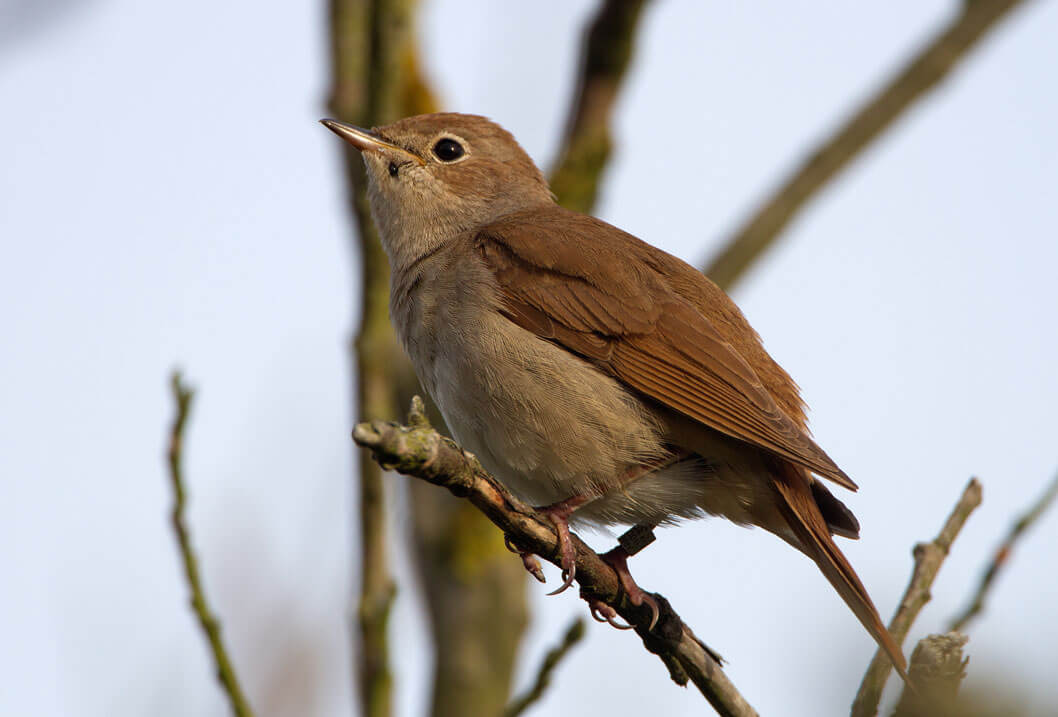We mostly know Nightingale by its song because it is not easy to see and its plumage is rather inconspicuous, although its rufous back and tail, and especially of its tail, allied with its black eye and its strong pinky legs, give it a good look.

It stands at the bottom of the bushes and shrubs, near the water if it has the opportunity, and it is only on rare occasions that it comes to sing in the open. The male sings night and day, but once it has found a companion, it stops singing at night. It is therefore assumed that nocturnal singing is mainly used to attract a partner and that daytime singing has the role of defending its territory.
It returns from Africa in April and and will raise one or two broods before migrating again in August. Like other "trans-saharan" migrants, it will leave one evening, at dusk, and fly a few hundred kilometers to rest on a first stop-over site. And so on, until reaching the Sahara, where it will be necessary to build more important reserves in anticipation of the 2000 km of crossing without possibility to feed. It makes this long trip twice a year, during the 10 years that can last its life.

